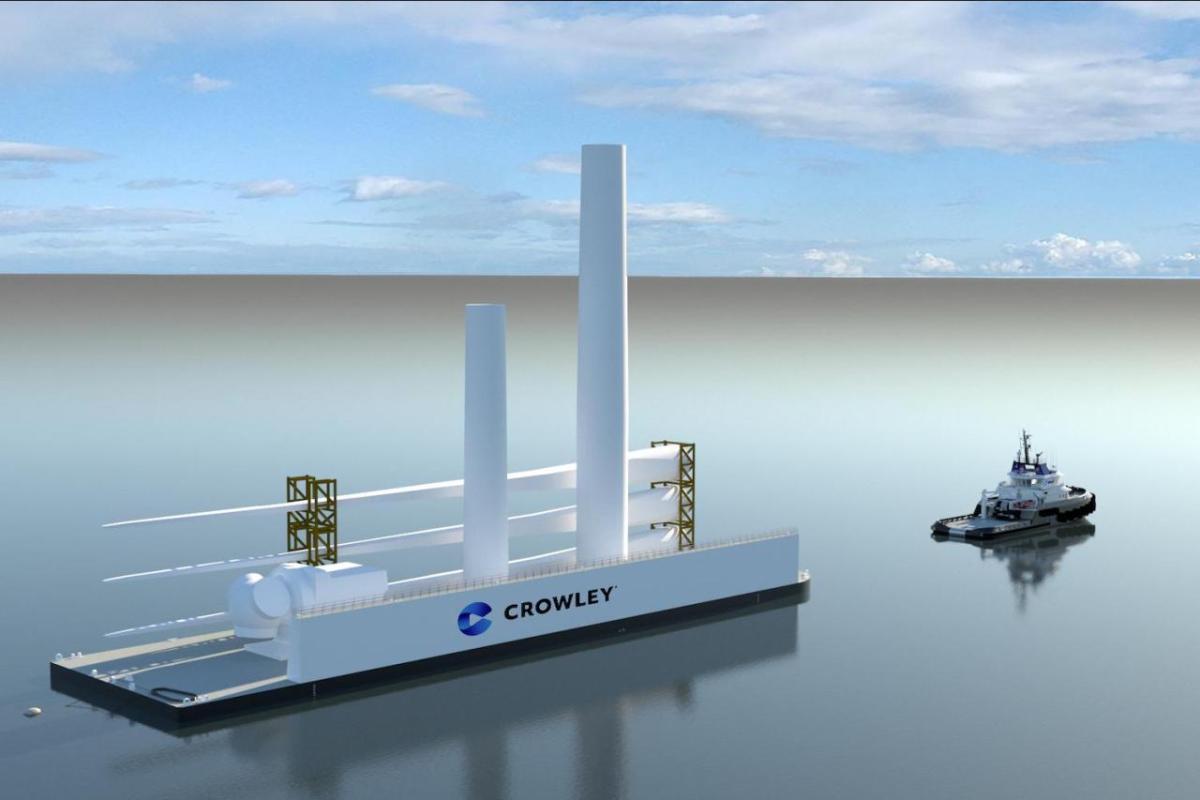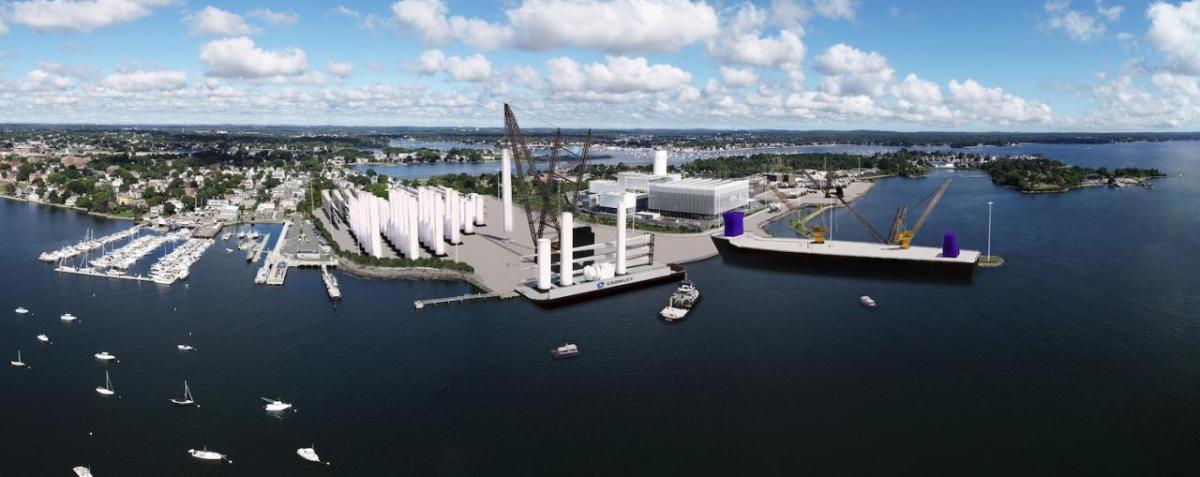As New Opportunities Emerge, the U.S. Offshore Wind Industry Is Ready for Takeoff
Originally published on TriplePundit
Offshore wind energy is relatively new to the U.S., with the first offshore turbines coming online less than 10 years ago. As with any new industry, its impact on the national economy has yet to take shape, but signs of activity are already beginning to stir.
A look at the current landscape indicates offshore wind will exercise a strong and sustainable influence over business growth and job creation in the U.S. in the years to come, while also helping to shepherd the global economy into a more sustainable energy profile.
Vast opportunities in the U.S. offshore wind industry
Compared to land-based wind farms, it may seem difficult, cumbersome and expensive at first glance to send wind turbines out to sea. However, there are several significant advantages. Wind speeds are stronger and more efficient on the open ocean, larger areas are available for development, and offshore wind farms can serve high-population coastal cities where land for renewable energy development is scarce. In addition, the massive wind turbines of today can be shipped from a port-side manufacturing facility to the offshore site without encountering tunnels, bridges and other onshore obstacles.
The coastal waters of the contiguous U.S. are rich in offshore wind opportunities. According to an assessment by the U.S. Department of Energy, 1.5 terawatts – 1,500 gigawatts -- of offshore wind energy are technically available for development with conventional, fixed-bottom wind turbines. New floating turbine technology has opened up an additional 2.8 terawatts in waters that are too deep for conventional turbines.
The U.S. offshore wind industry is gearing up
In other parts of the world, the offshore wind industry is already well underway — and accelerating. In Europe, for example, Denmark installed the first offshore turbines in 1991. It took 30 years for Europe’s total offshore capacity to reach 14.6 gigawatts in 2021. The EU is targeting another 45 gigawatts of offshore capacity in less than 10 years and 300 gigawatts by 2050.
In the U.S., the nation’s first commercially operating offshore wind farm is the Block Island wind farm off the coast of Rhode Island. It came online in 2016 with just five turbines and a total capacity of 30 megawatts.
Seven years later, Block Island still remains the nation’s only commercially operating wind farm, but not for long.
A new, streamlined offshore wind area leasing process and more vigorous support from public policymakers has finally opened up the U.S. market and set the stage for a new burst of economic activity.
Helping to accelerate the U.S. offshore wind industry are legacy maritime firms like Crowley, which have the experience and knowledge base to take a new maritime industry under their wing by leveraging supply chain capabilities and the nation’s substantial port-side infrastructure opportunities.
Massachusetts, for example, has set a goal of 5.6 gigawatts in offshore wind capacity by 2030. The state enlisted Crowley to provide terminal operations and other support for the new Salem Offshore Wind Terminal, which is nearing the construction phase.
In an interesting twist on the decarbonization story, the terminal site once housed a 750-megawatt coal and oil power plant. The plant was shut down in 2014, and part of the site now houses a gas power plant.
Crowley is tasked with designing, constructing and providing operational logistics services for wind developers serving projects for Massachusetts and other New England states. That includes vessels, onsite logistics and broader supply chain management, as well as maintenance support once the turbines are operational.
Along with supplying clean energy, the New England states’ push toward offshore wind is set to create an infusion of new jobs in wind, maritime and related industry.
“We see the need for mariners, stevedores, logisticians and technicians — roles and careers that will add value to the supply chain and wind industries and also benefit the communities’ economies,” said Bob Karl, senior vice president and general manager of Crowley Wind Services. “In addition, the project will support workforce in the construction phase beginning late 2023-2024.”
In support of wind industry employment, Crowley also partnered with the Massachusetts Maritime Academy in a first-of-its-kind training and workforce development program tailored to the New England offshore wind energy industry.
Meeting the floating offshore wind challenge
The waters of the Atlantic coast are relatively shallow, making them ideal for fixed-bottom wind turbines. The Pacific coast is deeper, requiring new floating wind technology. Crowley is also pursuing opportunities there, as California works toward a statewide goal of at least 5 gigawatts in offshore wind energy by 2030.
Planners anticipate the waters off Humboldt Bay in Northern California can provide 1.6 gigawatts of that amount. Crowley’s Wind Services business unit is developing a new marine terminal there to service the region’s floating offshore wind sector.
“Services there will support tenants in the manufacturing, installation and operation of offshore wind floating platforms, use of large heavy cargo vessels, and providing crewing and marshaling services in the Pacific waters,” according to the company.
Floating wind technology is relatively nascent, but there is a strong overlap with traditional maritime services. The key functions are heavy lift capabilities and other supportive operations that are well within its skill set, Karl said.
“Crowley has decades of experience supporting the energy industry, and the assets and services we have operated in the past — tugs and barges, terminals, marine engineering — can help develop, build and sustain wind installations on the U.S. East, West and Gulf Coasts,” he told us.
“Crowley has been supporting large assets and equipment installations, as well as providing supply chain services that has helped the energy sector in the past, and these capabilities are applicable now,” he continued. "The use of our supply chain management experience, asset support for offshore projects and history of operating terminals is a natural fit for supporting renewable energy in offshore wind.”
Economic development and decarbonization, too
Crowley includes itself in the trend toward decarbonization, with an eye on its full value chain as well as its own operations. The company aims to achieve net zero greenhouse gas emissions across the value chain by 2050 and published its second annual sustainability report detailing its decarbonization efforts this summer.
The reports highlighted Crowley’s first-of-its-kind electric tugboat, the use of liquified natural gas instead of conventional maritime fuel, and the recent endowment of the Crowley Center for Transportation and Logistics as an innovation hub at the University of Florida’s Coggin College of Business in Jacksonville.
Crowley added to its innovation roster last year in a joint venture with the shipbuilding firm ESVAGT, which has pioneered the use of purpose-built, specialized service operations vessels (SOVs) for offshore wind construction personnel. The venture is building a new SOV for coastal Virginia wind installations.
Follow the money to a new Industrial Revolution
Crowley expects construction at the Salem facility to begin later this year., and the company has established an office in California to oversee the terminal development at Humboldt Bay. In Louisiana, the company has the right of first refusal to develop and operate a wind terminal at Port Fourchon.
“We are also building out more engineering, procurement and construction capabilities for project management so energy companies can leverage end-to-end, turnkey services as the nascent wind industry in the U.S. takes off,” Karl said.
Despite opposition by some fossil energy interests and other stakeholders, the U.S. offshore wind industry has the potential to lead a 21st-century Industrial Revolution. Progress will continue to accelerate if public policy in support of decarbonization continues to gather force.
“Crowley is committed to reaching net-zero emissions across all our scopes, not just our operations but our full value chain including our suppliers and partners,” Karl said. “Not only is clean, renewable energy from wind consistent with Crowley’s commitment to reaching net-zero, it helps our communities, and the people there enjoy a more sustainable future.”
This article series is sponsored by Crowley and produced by the TriplePundit editorial team.
Images courtesy of Crowley



